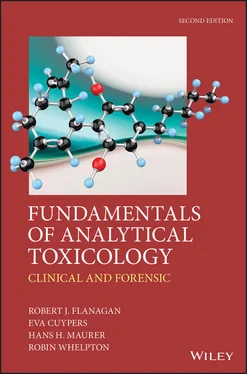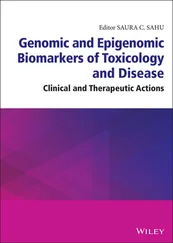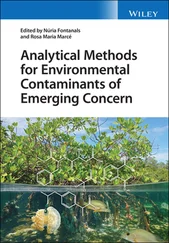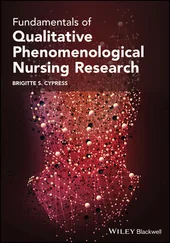1 ...8 9 10 12 13 14 ...27 The nature of the sample and the expected concentration of any analyte(s) are obvious influences on the choice of method. It may be possible to measure the concentration of a known substance in a relatively pure solution directly using a simple technique such as UV spectrophotometry. However, if the sample is a piece of post-mortem tissue such as liver then a wholly different approach will be required. Typically, a representative portion of the tissue will have to be homogenized and the analyte obtained in a relatively pure form by LLE, for example, of the homogenate at an appropriate pH. Further purification or extract concentration steps may be needed prior to instrumental analysis. In the case of organic poisons, this will usually be by a chromatographic method such as GC or LC because both qualitative and quantitative information can be obtained during the course of the analysis. The choice of instrument may influence the choice of sample preparation procedure, although this is not always the case.
For optically active (chiral) drugs ( Table 1.4), the desired clinical activity resides predominantly in one enantiomer, the eutomer. The other enantiomer (the distomer) may be either pharmacologically inactive, or have different properties from its enantiomer, so administration of a racemate (a 50:50 mixture of enantiomers, Table 1.5) is the same as giving different compounds as far as the body is concerned. The supply of optically active compounds as pure enantiomers is sometimes indicated by the name used (dexamfetamine, dextropropoxyphene, escitalopram, levorphanol), but this does not always apply (hyoscine, morphine, physostigmine). Moreover, it is thought that some 50 % of currently used drugs are chiral, of which some 88 % are supplied as racemates, usually without any indication of the fact (Nguyen et al ., 2006). Atropine is the approved name for (±)-hyoscyamine, for example.
With the exception of amfetamine (Section 22.4.21.1) and other misused drugs where the enantiomers have different actions such as dextromethorphan/levomethorphan (levorphanol) and perhaps escitalopram (Section 22.4.3), there are few clear indications for providing chiral methodology for routine analytical toxicology at present. In part this is because chiral analysis at the sensitivity required for the analysis of biological samples is difficult. It should be noted that not only is MS achiral, but also that positional isomers cannot be differentiated by MS unless either resolved chromatographically, or by differing fragmentation patterns. Nevertheless, chromatographic methods have made a major contribution to the development of pharmacology and therapeutics by providing methods to separate enantiomers on a preparative scale and on occasions in biological samples (Fortuna et al ., 2014).
1.3.3 Method validation and implementation
Whatever analytical method is used it must be validated, i.e. it must be shown to be ‘fit for purpose’. Method validation is important not only when developing a method (Peters et al ., 2007), but also when implementing a method for routine use (Wille et al ., 2017). A number of terms important to understanding method validation are given in Table 1.6. A fundamental starting point in any assay is obtaining certified pure reference material, or at least the best approximation to such material that can be sourced. When preparing primary standards, particular attention should be paid to the M rof salts and their degree of hydration (water of crystallization). Analytical results are normally reported in terms of free acid or base and not of a salt ( Section 3.1.1).
A method must possess adequate sensitivity for the task in hand. The limit of sensitivity is a term often used to describe the limit of accurate measurement, but this is better defined as the lower limit of quantification (LLoQ). The limit of detection (detection limit) is a better term for limit of sensitivity. Whatever terminology is used, assessing the presence or absence of a compound at the limit of assay sensitivity is always difficult and ideally reporting a positive finding in such circumstances requires corroboration from other evidence.
Table 1.4 Summary of chiral nomenclature
| Number of chiral centres |
If n = number of optical centres there will be 2 n isomers.Molecules with two optical centres can exist as four molecules: two diasteromers (diastereoisomers), each consisting of two enantiomers, i.e. there are two pairs of enantiomers . The exception to this is if two molecules have a plane of symmetry (a plane that divides a molecule into two parts, each a mirror image of the other) and therefore cancel out their net optical rotation. In such cases they are known as mesoforms |
| Nomenclature |
Enantiomers possess a unique property in that they rotate plane-polarized light to the same extent, but in opposite directions. This is the basis of the (+)/(–) or d/l notation, the former being preferred as it avoids confusion with D/L, however it does not unequivocally distinguish between enantiomers because some molecules may change rotation on forming salts. The notation tells nothing about the absolute configuration, i.e. the spatial arrangement, of the atoms |
| Rotation of plane polarized light |
Rotates to the right – dextrorotatory (+) Rotates to the left – levorotatory (–) |
| Fischer |
The absolute stereochemistry in the Fischer notation gives the absolute spatial arrangement by reference to D-glyceraldehyde. The letters D or L are used (not to be confused with lower case d or l). The Fischer convention is still used for carbohydrates and amino acids. The original choice of D-glyceraldehyde was arbitrary, but was proved correct by X-ray crystallography |
| Cahn–Ingold–Prelog (CIP) |
The CIP system is the definitive method of assigning absolute configuration. The letters R and S indicate spatial arrangements as follows:Assign values to the substituent groups by highest atomic number aPoint the lowest value awayIf the remainder go from high to low clockwise then R (rectus)If the remainder go from high to low anticlockwise then S (sinister)In case of a tie go to the next atoms along The Fischer convention cannot be simply converted to the CIP system, i.e. R does not always equate to D. All naturally occurring α- amino acids in mammalian proteins are L-. Using the CIP system, cysteine and cystine are S - the others, without sulfur, are R - |
aThe rules are in fact more detailed: Highest atomic number > highest atomic mass > cis - prior to trans- > like pairs ( RR ) or ( SS ) prior to unlike > lone pairs are considered an atom of atomic number 0
Quantitative methods must have good precision (reproducibility) and accuracy (the results must reflect the true concentration of the analyte). Selectivity (freedom from interference, specificity) is important when a single species is to be measured, but broad specificity may be useful when screening for the presence of a particular class of compounds as discussed above. The recovery of the analyte, i.e. the proportion of the compound of interest that is recovered from the sample matrix during an extraction, for example, is important if sensitivity is limiting, but need not be an issue if the LLoD, accuracy, and precision of the assay are acceptable.
Table 1.5 Some terms used in stereochemistry
| Absolute stereochemistry |
The absolute spatial configuration of atoms of a molecule |
| Chiral |
Hand-like, i.e. left- and right-handed mirror images |
| Enantiomer |
One mirror image from of a pair of non-superimposable optically active compounds |
| Epimers |
Optically active molecules with more than two chiral centres differing at only one chiral centre |
| Epimerization |
Partial racemization of one chiral centre in a molecule with two or more chiral centres |
| Diastereomers |
Stereoisomers that are not mirror images of each other |
| Inversion |
Conversion of one enantiomer to the other |
| Meso |
Optically inactive isomer in which the activity of chiral centres are balanced |
| Racemate |
Equimolar mixture of both enantiomers of an optically active compound |
| Racemization |
Conversion of a single enantiomer to a racemate |
Ideally, whatever the methodology employed, quantitative assay calibration should be by analysis of standard solutions of each analyte (normally 6–8 concentrations across the calibration range) prepared in the same matrix and analyzed as a batch along with the test samples. A graph of response against analyte concentration should be prepared and used to calculate the analyte concentration in the sample (so-called ‘external standard’ method). Use of a full calibration sequence may not be possible in emergency toxicology, for example, and in such circumstances single-point calibration is often acceptable if properly validated ( Section 3.2.4.10).
Читать дальше












